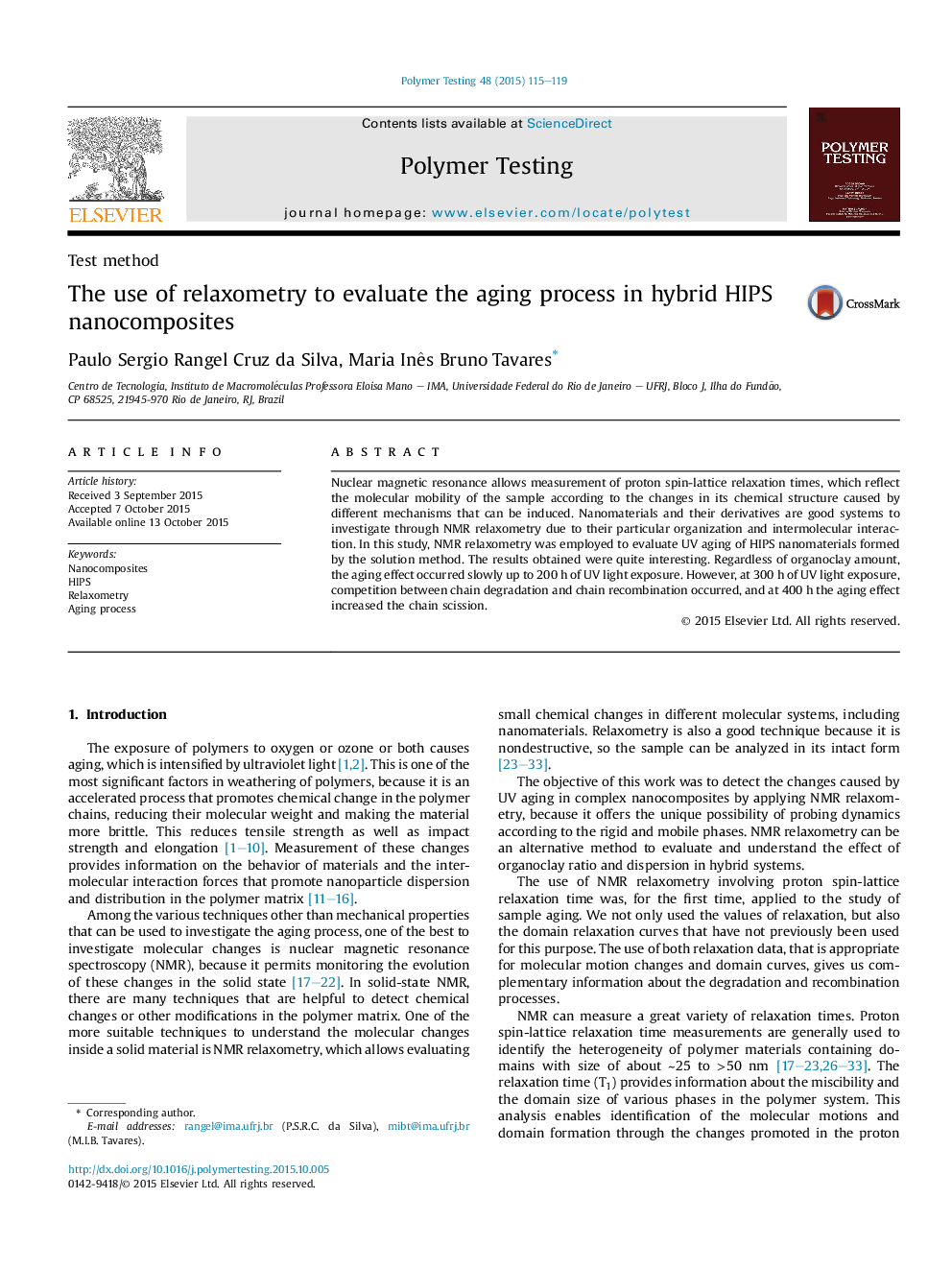| Article ID | Journal | Published Year | Pages | File Type |
|---|---|---|---|---|
| 5205950 | Polymer Testing | 2015 | 5 Pages |
Abstract
Nuclear magnetic resonance allows measurement of proton spin-lattice relaxation times, which reflect the molecular mobility of the sample according to the changes in its chemical structure caused by different mechanisms that can be induced. Nanomaterials and their derivatives are good systems to investigate through NMR relaxometry due to their particular organization and intermolecular interaction. In this study, NMR relaxometry was employed to evaluate UV aging of HIPS nanomaterials formed by the solution method. The results obtained were quite interesting. Regardless of organoclay amount, the aging effect occurred slowly up to 200Â h of UV light exposure. However, at 300Â h of UV light exposure, competition between chain degradation and chain recombination occurred, and at 400Â h the aging effect increased the chain scission.
Related Topics
Physical Sciences and Engineering
Chemistry
Organic Chemistry
Authors
Paulo Sergio Rangel Cruz da Silva, Maria Inês Bruno Tavares,
